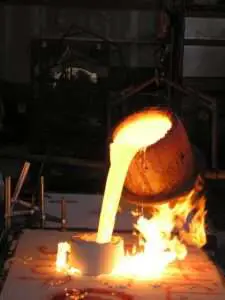
Tata Motors Ltd. – Stock Analysis(2024-25)
In this article we will try to analyze Tata Motors Ltd. based on previous six years of financial statements viz Balance sheet, Profit and Loss statement and Cash flow statement. With this fundamental analysis we will try to gain insight into the business activities, financial health, operating efficiency and profitability of the company and finally try to derive the intrinsic value of the stock using Discounted Cash Flow method and the price at which the stock becomes attractive for long term investment. This article is divided in three sections as listed below :-
Section 1: Qualitative Fundamental Analysis comprising of General Introduction, Business overview dwelling into Business Model, Strengths and Weakness, Long Term Sustainability and finally the competitors.
Section 2:Quantitative Fundamental Analysis on Financial Health, Operating Efficiency And Profitability.
Section 3: Calculation Of Intrinsic Value.
General Introduction
Dated: 14 Mar 25
Company: Tata Motors Ltd.
CMP: Rs. 655.40
Market Capitalisation: Rs. 2,41,265.14 Cr.
Share Holding Pattern:

Promoters: Tata Sons
Peers: Ashok Leyland, Force Motors, Maruti, Hyundai India, Mahindra & Mahindra
Fundamental Analysis Of Tata Motors Ltd.
Qualitative Analysis
General Introduction:
Tata Motors was founded in 1945 as train locomotive manufacturer. The company started manufacturing commercial vehicles in 1954 after forming a joint venture with Mercedes-Benz. Today the company has presence in 125 countries, 25 manufacturing facilities along with designing and R&D centers. In 2008 the company acquired Jaguar Land Rover from Ford for $2.3 Billion. The company manufactures vehicles in various segments Trucks, Buses, Light Commercial Vehicles, passenger cars, sports cars and SUVs. The company is one of the first movers in Electric Vehicle segment in India.
Business Overview:
Tata Motors Ltd. is a $40+ Billion dollar organization today and are pioneers in India’s EV transition phase. The company operated mainly through four verticals as listed below
- Commercial Vehicles
- Trucks
- Buses & Vans
- Small Commercial Vehicles & Pickups
- Intermediate Light Commercial Vehicles
- International Market Pick up and Trucks meeting EUs emission standards.
- Passenger Vehicles
- Passenger cars (Petro/ Diesel/ CNG & Electric Varients)
- SUV (Diesel and Electric Variants)
- Jaguar Land Rover
- Range Rover
- Discovery
- Defender
- Jaguar
- Vehicle Financing.
Jaguar Land rover was once a sick vertical of the company, as of 2019 the company had to write down the assets of the tune of $3.9 billion and today this segment generates almost 69% of the total revenue of the company. This shows the perseverance of the Tata Group in turning around their companies in case they go through dull phase. The India automotive business of the company is now debt free, and the company is hoping to make JLR debt free by FY25.
Commercial Vehicle Segment
In commercial vehicle segment apart from Heavy Trucks, Intermediate Trucks, Small Commercial Vehicles, Buses and International Business, the Company is focused on growing its Non-Vehicular business (spares, service etc.), incubating Smart Mobility (EV mobility solutions for cities) and Digital business (digital solutions for the truck and trip ecosystem). The growth in Indian Economy backed by industry growth in the coming years will definitely have a positive impact on the company as it is one of the market leaders in commercial vehicles in the county.
Tata Motors, has taken a lead in the electric mobility space, with over 2,600 electric buses now plying on Indian roads. Taking India ahead on the global map, the company has embarked on our electrification journey, launching Tata Ace EV in Nepal. The company has also introduced Hydrogen Fuel Cell-powered buses – the first of their kind – to Indian Oil Corporation Ltd. By leveraging hydrogen fuel cell technology, these buses represent a significant advancement in reducing environmental impact and advancing cleaner, more efficient transportation options across the country.
Passenger Vehicles Segment
Sharp focus on emission-friendly technologies improved the penetration of CNG and electric vehicles to 29% in the overall portfolio. In EVs, the business continued to lead the way with 70%+ market share. Nexon and Punch were the top two SUVs sold in India in FY23-24. India’s vehicle penetration, at about 30 vehicles per 1,000 population, is well below global norms and is expected to continue to increase. Tata Motors is well placed to further strengthen its market position and tap into this growth opportunity. The competitive intensity in this portfolio will remain high and the business will continue to invest in products, platforms, electrical & electronic architectures, and vehicle software to remain competitive.
Jaguar & Land Rover
The premium luxury market is a strong, resilient, and aspirational market position that requires a strong brand heritage, stunning products, cutting edge technology and an intuitive, personalised customer experience. JLR is well on its way to further strengthen its credentials through its cult British brands of Range Rover, Defender, Discovery and Jaguar. The company is also planning to launch all electric vehicles in near future along with products, platforms, electrical & electronic architectures and vehicle software to provide a world class in-cabin and all-round customer experience to our discerning clientele.
To enable execution of well differentiated strategies and to further empower each business to pursue it purposefully with greater agility and accountability, the Board has proposed the demerger of the Company into two separate listed companies housing A) the Commercial Vehicles business and its related investments in one entity and B) the Passenger Vehicles businesses including PV, EV, JLR and its related investments in another entity. This will also help secure the considerable synergies across PV, EV and JLR particularly in the areas of EVs, autonomous vehicles, and vehicle software.
In February 2021, Jaguar Land Rover business announced a change in direction under its new Reimagine strategy. At the core of this is the rapid electrification of both Jaguar and Land Rover. JLR aims to achieve net zero carbon emissions across its supply chain, products, and operations by 2039 with all brands offering pure-electric options by 2030.
Vehicle Financing Segment
Vehicle financing is the next logical step for the company to provide the needing customers the means to purchase the vehicle of their desire, be it commercial or commercial usage variant. The vehicle financing segment has a strong footprint in India and operates through 350+ branch networks, in addition to Tata Motors dealers sales outlets. NBFCs are on a growth track with strong consumption led demand in retail loans. Const of funding may only be the hurdle in the path for NBFCs.
Trends of Future
As per IMF’s projection, India’s GDP growth is projected to remain consistently strong in the coming years. This strength is attributed to sustained domestic demand and a growing working-age population. The Government of India is committed to infrastructure development in line with its vision 2047. This sharp focus on improving productivity in both manufacturing and agriculture sectors, coupled with a promising growth outlook, bodes well for overall demand creation in the economy for both Commercial and Passenger Vehicles.
As demographics shift, we see a rising base of young and aspirational consumer emerging. Their preference for safe, smart and feature-rich vehicles with greener powertrains is resulting in a growing demand for SUVs and high-end variants. In the Commercial Vehicles business, the industry dynamics are changing with customers preferring performance-oriented vehicles that are more efficient, offer benefits of connectivity, support and service – all offered at the lowest total Cost of Ownership (TCO). So in effect the business model is changing from being a pure OEM to a holistic services and solutions provider.
The company has also given due impetus to the need of sustainable growth. Increasing the decarbonising of vehicles and the materials used to build them, the rising use of energy drawn from renewable sources, ensuring water neutrality, moving towards a circular economy and a scientific approach, to preserving nature and biodiversity are amongst the several pioneering initiatives that it has adopted.
Next we will discuss the sales breakdown in terms of volume, revenue and geography.
Sales Volume of Vehicles
| 2020 | 2022 | 2024 | |
| Passenger Cars | NA | 18.8% | 53.7% |
| Utility Vehicles | NA | 45.7% | 8.9% |
| Heavy Commercial Vehicles | NA | 10.3% | 4.9% |
| Intermediate Light Medium Commercial Vehicles | NA | 6.1% | 12.1% |
| SCV & Pick Up | NA | 17.4% | 3.5% |
| CV Passenger Vehicle | NA | 1.7% | 17.0% |
Revenue Mix
| 2020 | 2022 | 2024 | |
| Jaguar Land Rover | 80.28% | 67.4% | 69.13% |
| Commercial Vehicles | 14.02% | 18.8% | 17.98% |
| Passenger Vehicles | 4.04% | 11.3% | 11.95% |
| Vehicle Financing | 1.66% | 1.6% | 0.94% |
| Others | – | 0.9% | – |
Geographical Breakdown of Revenue
| 2020 | 2022 | 2024 | |
| India | 18% | 28.89% | 29% |
| USA | 20% | 16.28% | 15% |
| UK | 16% | 11.88% | 13% |
| EU | 17% | 11.7% | 13% |
| China | 11% | 15.32% | 13% |
| Others | 18% | 15.57% | 17% |
****************************************************
Quantitative Analysis
Leverage Ratios

Observations:
- The company has managed to reduce its debt levels during this period. In absolute terms the debt has reduced by 7.69% however, there is increase in shareholder’s equity which has led to far greater reduction in ratio.
Operating Ratios

Observations:
- The company has maintained a positive working capital during the period indicating that its current assets are sufficient to cover its current liabilities.
- Receivable turnover has remained fairly stable during the period.
Profitability Ratios

Observations:
- During the period the company has worked with an average PAT margin of 5.05%.
- The company has given an average return on capital of 7.61% during the period, however, at current enterprise valuation the return works out to be almost equal to long term Government of India Bond Coupons for a new investor.
****************************************************
To learn Fundamental Analysis and
Company Intrinsic Valuation
Visit
Intrinsic Analyst – Learning Center.
Also Check out Testimonials of people who joined us in this Investment Journey!!!
****************************************************
Author
Jibu Dharmapalan
SEBI Registered Research Analyst
Registration No. INH000014678
GSTIN: 32AHVPD3247L2Z3
Mobile: +91 9656125475
Click Here To Contact on – Whatsapp or Telegram
Check Intermediary on SEBI Website
If You Like This Content 👇👇👇
Click Here To Join Us on Facebook For Free Live Interactive Discussion And Learning
References:
BSE India – Tata Motors Ltd. Annual Reports
Tata Motors Ltd. – Investors – Annual Reports
Click Here for Home
FAQs
What is Intrinsic Value?
Ans: When someone invests in an asset, he does so in order to earn money from the business. The investor gets paid over a period of time as long as he is invested in the asset. Now intrinsic value is the present value of all such future cash flows generated by the asset. So logically one should not invest in any asset if the ask price is more than the intrinsic value of the asset.
How is Intrinsic Value of a company calculated?
Ans: For calculating the intrinsic value of a company all its future cash flows are extrapolated based on the past performance of the company, assumptions about the future growth of the company and its terminal value. Once all these are calculated these are brought to the present date based on appropriate discounting rate. The sum of all these gives the intrinsic value of the company. It may be more or less than the market capitalization of the company. If it is more than the market capitalization of the company then the company is said to be undervalued and is a good bet as a long-term investment and vice versa.
How is Intrinsic Value of a share calculated?
Ans: Once intrinsic value of a company is calculated as explained above, it is divided by the total number of outstanding shares of the company. This gives the intrinsic value of a share.
What is Discounted Cash Flow?
Ans: When we have cash flows that are spread over a period of time then Discounted Cash Flow method is used to calculate present value of all such cash flows. The present value depends on the discounting rate used. Usually 10 year Government bond yield rate(risk free rate of return) is used as the discounting rate.
















